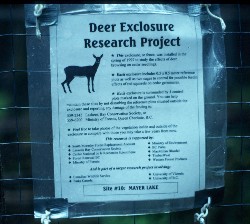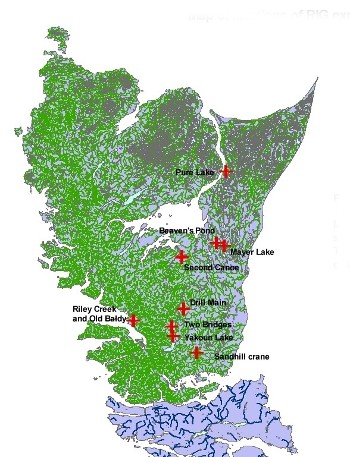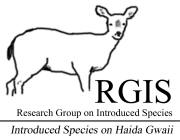

- Menu
- Home
- Haida Gwaii
- Introduced Species
- RGIS
- What did we learn?
- Research
- Publications
- RGIS symposium
- School curriculum
- Contacts
- English
- Français
Effect of browsing history on the vegetation
Effect of prolonged deer population reduction on the vegetation |
||
Exclosures experiments - Deer cull experiments |
||
Exclosures experiments |
||
Aim & scope - Where & when - How - Main results - Conclusion - Scientific Publications |
||
Aim and scope |
||
|
||
return to top of page |
||
Where and when |
||
|
||
return to top of page |
||
How |
||
|
Western
redcedar (Thuja plicata) seedlings survival For each exclosure: Eight 50x50 cm plots with dense cedar germination were selected, half of them inside the enclosure, half of them outside. Seedlings were inventoried and marked in the plots at the onset of the experiment and their growth and survival were monitored periodically. |
||
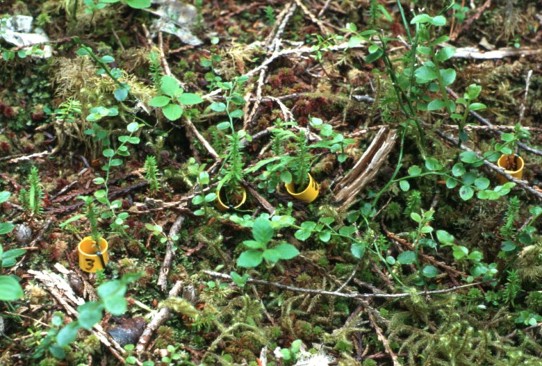 |
||
Were recorded:
|
||
|
Vegetation diversity For each exclosure: Two vegetation plots were monitored, one covered the entire area of the exclosure and the other one covered a similar area outside of the enclosure. Species present were inventoried. Were also recorded:
|
||
return to top of page |
||
Main Results |
||
|
A visual
assessment of the vegetation inside and outside the exclosures gives us an idea
about the vegetation recovery potential when released from deer browsing
pressure. |
||
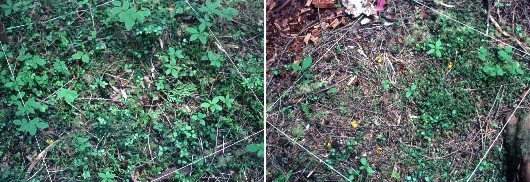 |
||
Germination seems to be more dense in the inside plot (on the left) than in the outside plot (on the right) of the same exclosure after a few years of deer exclusion. |
||
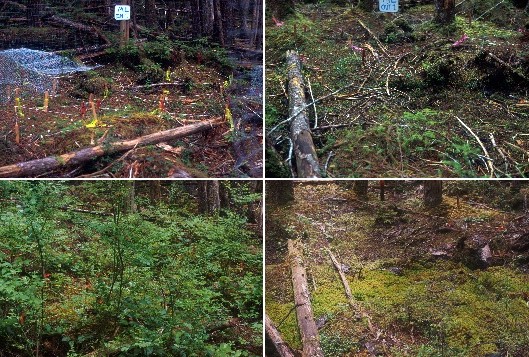 |
||
Changes in vegetation in Mayer Lake's exclosure: on the left, view of the inside in 1997 (top) and 2005 (bottom); on the right, view of the outside in 1997 (top) and in 2005 (bottom). Vegetation recovers inside the exclosure, while it remains short and browsed outside. |
||
ConclusionWestern redcedar seedlings
survive dramatically better in the exclosures but growth is slow
meaning that young trees will be totally exposed to browsing for at
least one decade and possibly much more.
|
||
Scientific PublicationsNoemie Stroh, Christophe Baltzinger, Jean-Louis Martin, 2008, Deer prevent western redcedar (Thuya plicata) regeneration in old-growth forests of Haida Gwaii: Is there a potential for recovery?, Forest Ecology and Management 255 (2008) 3973–3979 - PDF |
||
return to top of page |
